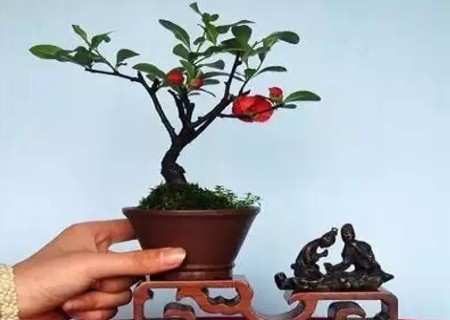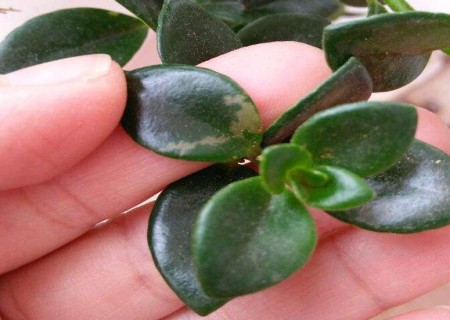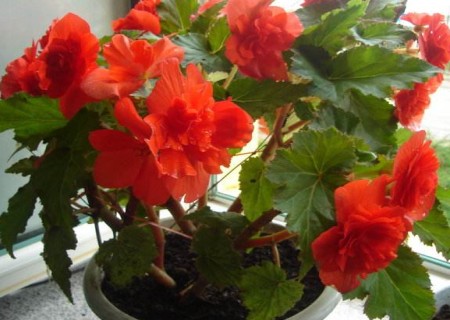Culture method of Begonia bonsai
In ancient times, the crabapple flower was Junyan to me in the palace garden. People always regarded the crabapple as a sign of wealth. Keeping a pot of crabapple flowers at home meant that the flowers were rich and the money was rolling in. It means to give the host family unlimited glory and wealth.
People like the crabapple flower because it is suitable for all ages since ancient times.

Begonia bonsai is deeply loved by people. In the Dream of Red Mansions, a group of sisters in Daguan Garden once married the Begonia Society and sang poems about the beauty of crabapple flowers. But when you are faced with a pot of beautiful crabapple flowers, will you worry because you don't know how to raise them? The following points may be helpful to you.
1. Soil
If the soil is loose and alkaline, crabapple flowers need relatively loose soil and need to contain some alkalinity. The ph value of the soil is not less than 7. You can add 1/3 river sand to the soil at the bottom of the flower bed or tree. The depth planted in the pot should not be too deep, so that the root system can be well extended, and it is better to load it at a depth of 12 cm from the bottom of the basin, but it depends on the size of the plant.
2. Lighting
Begonia likes sufficient light, can not bear shade, so it needs to be placed in places with sufficient light, such as balcony, window and so on. At noon in summer, the sun is hot and needs proper shade to prevent flowers and leaves from being burned. At the same time, you should often turn the direction of the flowerpot so that it does not grow askew in a direction of light.
3. Ventilation
It should be placed in a ventilated place. Begonia can be placed in a ventilated place such as the courtyard or balcony. Begonia is more hardy, so it can be kept outside in winter, but if it is particularly cold, some anti-freezing measures should be taken.
4. Moisture
Water is the source of all things, and the growth of begonia is inseparable from water. Watering to keep the basin soil moist is better, specific watering should depend on the weather, should keep the basin soil moist, but not stagnant water, it is best not to be caught in the rain, lest too much water lead to rotten roots, do not water when too cold. The potted soil should not be too dry during the growing period of spring and summer, especially during flowering.
5. Fertilization
Begonia bonsai should be fully fertilized in winter, and dry cake fertilizer or rotten barnyard manure and bone meal are the best. During the growth period, thin fertilizer and water are often applied except for the rainy season. Fertilizer is essential to make crabapple flowers bloom brightly. In the spring bud sprouting, it is necessary to apply some organic fertilizer to replenish nutrients and water once. Apply organic fertilizer when falling leaves in autumn, also cooperate with watering once, apply phosphorus and potassium fertilizer after flower fade, you can buy some special fertilizer for begonia every day, and fertilize properly according to the instructions.
6. Pruning
Pruning branches and leaves in early spring, in order to ensure that the plant can blossom vigorously, pruning branches and leaves should be carried out from defoliation to sprouting in early spring, which can subtract weak branches, branches and leaves of diseases and insect pests, individual longer branches and leaves, overdense branches and leaves, and vertical pruning of sparse branches to promote its multiple lateral branches.
7. Turn the basin
It is appropriate to turn the potted crabapple bonsai every 2-3 years, preferably after flowering in spring or autumn. When turning the basin, the root system should be trimmed and the base fertilizer should be put at the bottom of the basin.
8. Pest control
Begonia has many diseases and insect pests, such as red spot, leaf spot, coal pollution, etc., which can be controlled by spraying Baume 0.5 degree stone sulfur mixture; the main insect pests are aphids, shell insects, red spiders, longicorn beetles, and so on. 1200 dichlorvos solution can be used to control aphids, longicorn beetle eggs and shell insects, and Baume 0.5 degree stone sulfur mixture plus a small amount of acarone can be used to control red spiders.
Note:
1. If the plant grows up, it is necessary to change the pot in time so as not to affect the growth of begonia.
2, daily watering is not too much, so that the basin soil can be moist, so as not to cause rotten roots.
Time: 2019-05-31 Click:
- Prev

How to raise goldfish hanging orchids
Goldfish orchid blossoms, a small fish mouth is really cute. Maybe some flower friends will ask, when will my family blossom? This is not necessarily, in theory, it can blossom except in summer, so don't worry. When this hot day is over, it can blossom at any time. All we need to do is make it strong.
- Next

How to raise Begonia Flower in husband and wife-Culture method of Begonia between husband and wife
Husband and wife begonia, a single flower branch and pedicel open two, a single, a female, a double, is a male flower, because one bloom is a pair, so people call it husband and wife begonia, but occasionally there are three flowers, there are also two pairs, but very few, I planted only one three flowers, did not take pictures
Related
- Fuxing push coffee new agricultural production and marketing class: lack of small-scale processing plants
- Jujube rice field leisure farm deep ploughing Yilan for five years to create a space for organic food and play
- Nongyu Farm-A trial of organic papaya for brave women with advanced technology
- Four points for attention in the prevention and control of diseases and insect pests of edible fungi
- How to add nutrient solution to Edible Fungi
- Is there any good way to control edible fungus mites?
- Open Inoculation Technology of Edible Fungi
- Is there any clever way to use fertilizer for edible fungus in winter?
- What agents are used to kill the pathogens of edible fungi in the mushroom shed?
- Rapid drying of Edible Fungi

